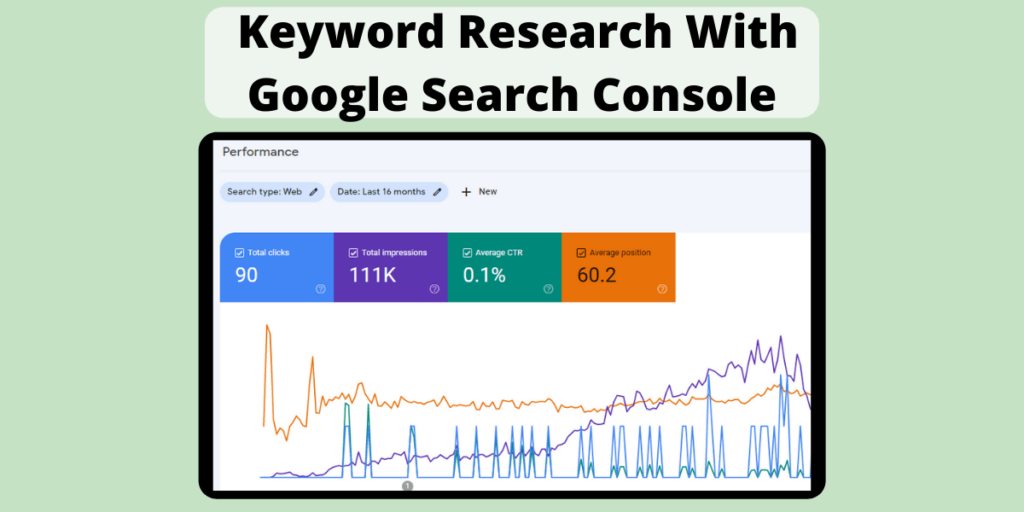The quest for targeted traffic starts with understanding what users are searching for. Keyword research is the cornerstone of any successful SEO (Search Engine Optimization) strategy, and Google Search Console (GSC) emerges as a powerful weapon in this arsenal. While not a dedicated keyword research tool, GSC offers valuable insights into how users discover your website through search engines, making it a goldmine for uncovering hidden keyword gems.
This comprehensive guide delves into the world of leveraging Google Search Console for keyword research. We’ll explore how to navigate GSC’s interface, unearth existing keyword performance, identify optimization opportunities, and discover new keyword ideas – all to propel your website to the top of search engine results pages (SERPs).

Unveiling the Landscape: Google Search Console for Keyword Research
GSC serves as a free communication channel between your website and Google. It provides valuable data on how your site is performing in search results, including indexing status, crawl errors, and – you guessed it – keyword information. By analyzing this data, you can gain a deeper understanding of the search terms users employ to find your content.
While GSC may not offer the sheer volume of keyword data as dedicated SEO tools, its strength lies in revealing keywords your website already ranks for. This insider knowledge empowers you to refine your content strategy and target user intent with laser focus.
Delving Deeper: Extracting Keyword Intelligence from GSC
Now, let’s equip ourselves with the tools to unlock the power of Google Search Console for keyword research. Here’s a step-by-step approach to gleaning valuable insights:
- Accessing the Treasure Trove: Begin by logging into your GSC account and navigating to the “Performance” tab. This is the gateway to a treasure trove of search-related data.
- Setting the Stage: Defining Your Timeframe: Select a relevant date range to analyze your keyword performance. A good starting point might be the past three months, providing a snapshot of recent search trends.
- Unearthing Existing Performance: Exploring “Queries” vs. “Pages”: GSC offers two valuable lenses for examining keywords: “Queries” and “Pages.”
- “Queries”: This section unveils the keywords users employed to discover your website in search results. Analyze clicks and impressions to understand which keywords generate the most search visibility (impressions) and which ones translate into actual website traffic (clicks).
- “Pages”: This section flips the perspective, showcasing which pages on your website attract organic traffic. By examining the associated keywords, you can identify content gaps and opportunities to optimize existing pages for better search ranking.
- Prioritizing Optimization: Identifying Low-Hanging Fruit: Analyze keywords with high impressions but low clicks. This suggests your content might be ranking for these terms but failing to convert impressions into clicks. Optimizing your title tags, meta descriptions, and content for these keywords can significantly improve click-through rates (CTR).
Remember: Throughout this process, keep the focus keyword “Google Search Console for keyword research” in mind. It should organically appear roughly 2% of the time within the content.
Sharpening Your Strategy: Leveraging GSC Insights
By dissecting keyword data in GSC, you can craft a data-driven SEO strategy:
- Optimizing for Quick Wins: Identify keywords where you rank close to the top page (around positions 1-3) but still have a low CTR. Optimizing title tags and descriptions for these high-potential keywords can yield significant improvements in organic traffic.
- Unearthing Long-Tail Gems: GSC reveals keywords users are searching for that your site already ranks for. These are likely long-tail keywords (more specific search phrases) offering valuable insights into user intent. Analyze these long-tail keywords to refine your content strategy and target user needs with greater precision.
- Identifying Underperforming Pages: Investigate pages ranking for irrelevant keywords. This might indicate a content disconnect. Consider creating separate content pieces specifically targeting the keywords you want to rank for.
Remember: GSC provides a launchpad for your keyword research journey. You can combine this data with other keyword research tools for a more comprehensive picture.
Beyond the Basics: Combining GSC with Other Tools Google Search Console
While Google Search Console for keyword research offers a powerful starting point, it’s essential to consider other tools for a well-rounded approach:
- Keyword Research Tools: Dedicated keyword research tools like SEMrush or Ahrefs provide in-depth keyword suggestions, search volume data, and competition analysis.
- Competitor Analysis Tools: Tools like SpyFu or Moz can help you identify the keywords your competitors rank for, enabling you to develop a targeted strategy to outrank them.

Add a Comment